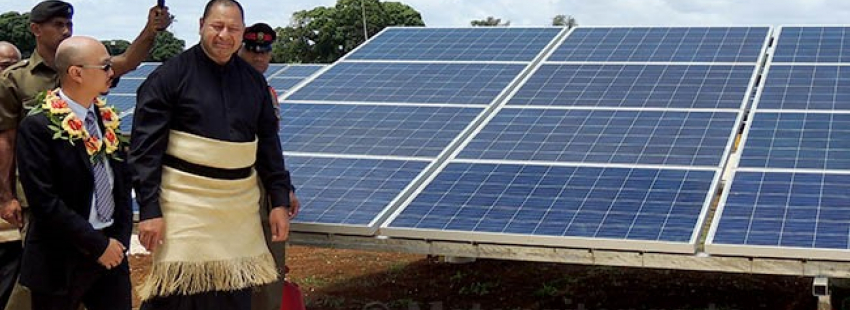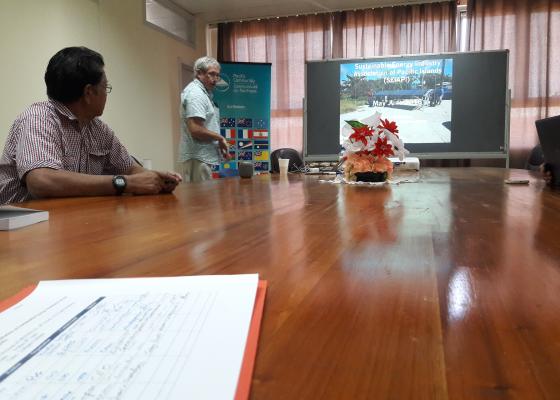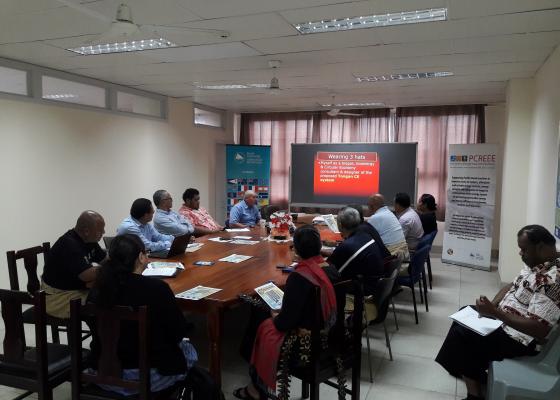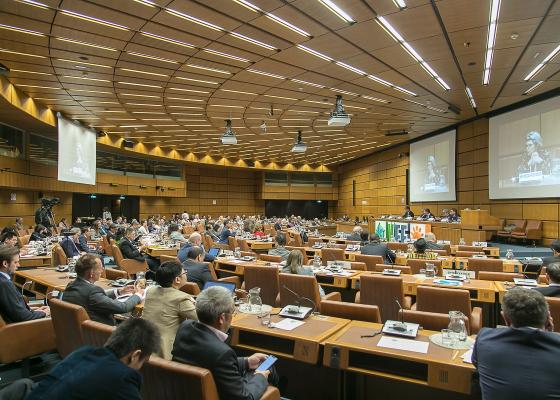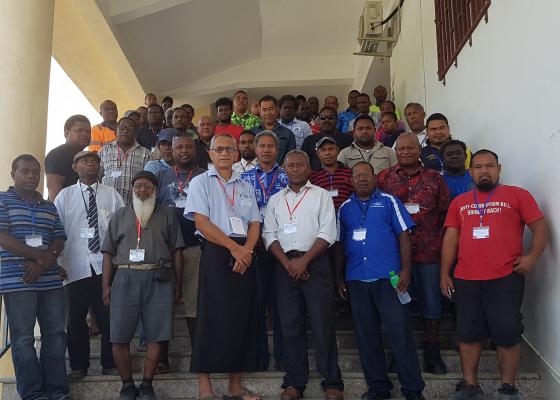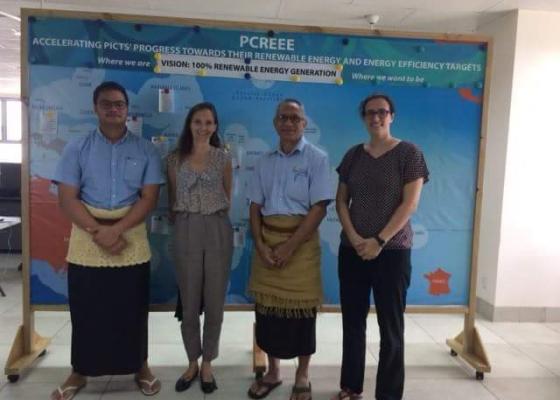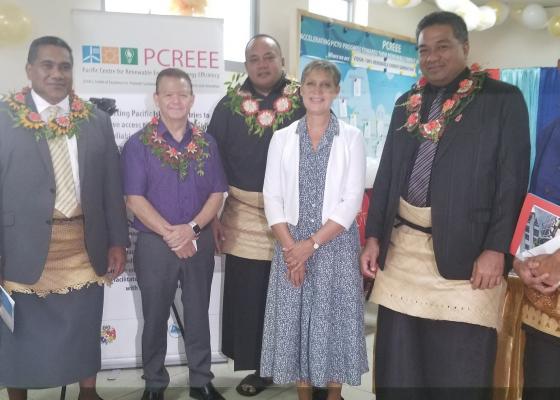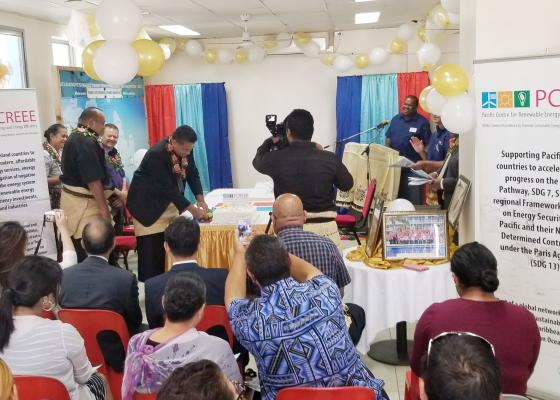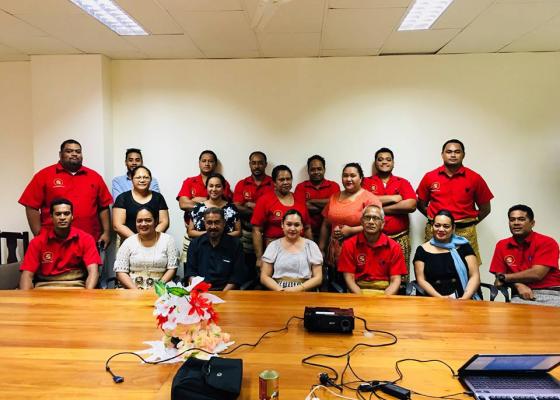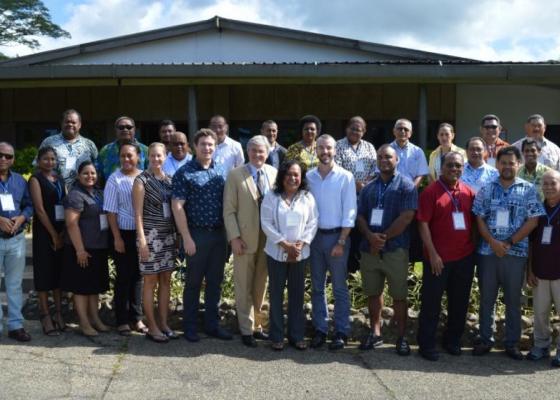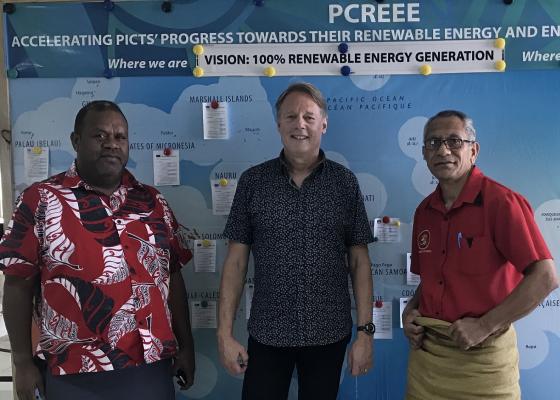COVID-19 disrupts Tonga's Energy Road Map rollout
By Pesi Fonua - Matangi Tonga Online. Tonga‘s CoViD-19 travel restrictions have disrupted national renewable energy targets for the next two years. Getting technical experts into the country to design and commission urgent work is a major problem.
A 10-year plan called the “Tonga Energy Road Map 2010-2020” (TERM) aimed to achieve 50% of electric power from renewable energy sources by 2020.
But now, a number of renewable energy projects that were scheduled to roll out in mid-2020 have been deferred indefinitely. A key administrator, Dr 'Aisake Eke, said they might not start moving again until late 2021 or even 2022.
Even though Tonga is one of a few countries free of COVID-19 cases, the restrictions to international travel to counter the spread of the virus have disrupted the movement of technical experts and the transportation of materials for the construction of renewable energy facilities here.
At least seven technical specialists are needed to arrive in Tonga as soon as possible, to install and commission critical storage batteries.
“It is critical for the Tongatapu Stabilizing Battery to get commissioned in March to be able to off-take all supplied energy from the independent solar producers who are on track for commissioning in March 2021,” Dr Eke said.
While a lot had been achieved, he said that fundamental parts of the TERM project remained to be put into place in order to reach the targets for renewables generation.
Critical to achieving the targets, are the installations of several battery energy storage units that are still in their construction or design phases.
Dr Eke, who chairs the Joint Utilities Board, recently reported to government on the status of Tonga‘s Energy Road Map 2010-2020.
Solar power
Six solar power projects had been completed on the most populated islands of Tonga (Tongatapu, Vava'u Lahi, Pangai and 'Eua):
- Maama Mai, Popua, Tongatapu, 1.32MW (2012)
- La'a Lahi, Vava'u, Neiafu, 200KW (2013)
- Mata 'o e La'a, Vaini, 1MW (2015)
- Ha Masani, Ha'apai, Pangai, 550KW (2016)
- Huelo 'o e Fuga Fonua, 'Eua, 'Ohonua, 200KW (2017)
- Singyes (Independent Power Producer IPP) Tongatapu, Matatoa 2MW (2017).
Meanwhile, three other solar projects that were due to be completed in 2020 were delayed. The Sunergise NZ 6MW IPP project experienced delays in getting technical experts into Tonga, and in the supply of materials.
The 'Eua and Vava'u 650KW projects had land related delays and detailed design could not proceed because of the travel restrictions.
The Green Energy Technology (GET) 6MW project experienced delays in securing funding and the detailed design was not possible because of the travel restrictions.
Wind farms
Only one of the three wind farm projects that were scheduled to be in place before the end of 2020, has been completed.
The Ii ‘o Manu Mataongo 1.375 megawatt wind farm, was launched on 10 July 2019, built at a cost of $42 million pa'anga funded by the Government of Japan.
However, for the wind farm to be in full operation as planned, it needs the battery storage projects to be completed.
Heavy CoViD-19 restrictions in Europe affected the manufacturing of the required equipment, said Dr Eke. Travel restrictions of engineers required in Tonga for commissioning of the battery systems was another reason for delay. Three would come from France, three from Spain and one from Australia.
The battery energy storage projects affected are:
- Tongatapu, Load Shifting, Battery Energy, Storage Project (construction phase).
- Tongatapu, Stabilizing, Battery Energy, Storage Project (construction phase).
- ‘Eua and Vava‘u Battery Energy and Storage Project, (design phases).
Two other proposed wind projects, the China Wind 2.8MW and the Wind IPP 4.5MW and projects were delayed.
The China project team was located in a province close to Wuhan where the Covid-19 outbreak occurred, and their project implementation team were unable to travel to Tonga due to the border restriction. While on the Tonga side, the land acquisition was not completed, stated Dr Eke.
Setbacks
Despite the setbacks, Dr Eke remains optimistic that Tonga Power Ltd. will be able to achieve its objective for Tonga to have 50% of its electricity need from renewable sources by late 2021 or mid 2022.
The Tonga Energy Road Map 2010-2020 is for the main islands of Tongatapu, 'Eua, Ha'apai and Vava'u.
Dr Eke said that while there had been attempts to establish renewable energy in some of the smaller outer islands, but they were now focused only on renewable energy for the main islands groups.
“Next is to address the major consumers of imported fuel, motor vehicles and boats, and renewable facilities for the outer islands."
The Tonga Energy Road Map (TERM) 2010-2020 was a ten-year plan to:
- Improve petroleum supply chain to reduce Tonga’s vulnerability to oil price shocks
- Increase access to electricity • Increase conversion efficiency of fossil-fueled electricity generation
- Reduce transmission and distribution losses
- Increase share of electricity generated from renewable energy sources
Source: https://matangitonga.to/2021/03/10/covid-19-disrupts-tongas-energy-road-map-rollout
Upcoming Events
-
01/19/2026 to 01/23/2026
-
03/02/2026 to 03/03/2026

